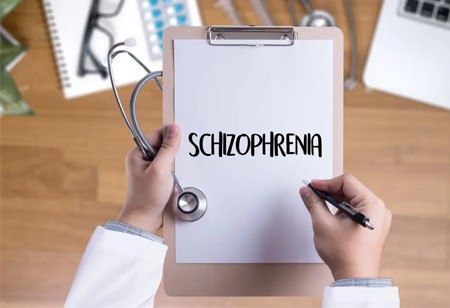Schizophrenia came to light over a century ago. It is contemplated to be a syndrome and implies an array of disorders in relation. The symptoms remain largely subjective. Commencing with a person being cross or vexed followed by intrusive thoughts. This is called psychosis.
Patients start manifesting extreme behaviors and disconnect from reality. Schizophrenia treatment follows after its diagnosis. Their symptoms generally kick off around late teens.
The multitudinous symptoms triggered by a psychotic outbreak may include hallucinations, delusions, and disoriented speech or behavior.
It is vastly despairing for loved ones and family members to witness someone they care about go through such a tough time. Patients are highly susceptible and hence the schizophrenia treatment must be rightly acclimatized.
TYPES OF SCHIZOPHRENIA
It is a complex disorder and can be classified into different types, depending on the symptoms. An individual could be confronted with convergent symptoms. They are personified in the form of delusions and hallucinations. The most typically spotted types of schizophrenia are listed below:
- Catatonic schizophrenia – It is encumbered by the physical state of the body. Patients may become unresponsive to stimuli or assume outlandish positions or make grotesque movements. They may even have rigid limbs and continue in one posture for long hours.
- Paranoid schizophrenia – It is triggered by rampant delusions and hallucinations disabling people to have a real inkling with life.
- Residual schizophrenia – At this stage, people start recovering but still manifest symptoms sporadically.
- Disorganized schizophrenia – Also known as Hebephrenic schizophrenia, patients are ill at ease when it comes to being vocal. They may stutter and embark on other symptoms like lack of emotions.
- Undifferentiated schizophrenia – Patients may exhibit symptoms concerning more than one type of schizophrenia. Such as disorganized speech, hallucinations, lack of emotions, or catatonic symptoms.
A patient may experience an obstruction in functioning normally and may often resort to drugs and alcohol to escape being ridiculed. However, mental health is becoming an epidemic and must be solemnly tackled.
DIAGNOSIS AND TREATMENT
- Physical exam – The first step in diagnosing schizophrenia is a physical exam. It comprises a multitude of tests that unravel the physical state of a person.
- Tests and screening – This step primarily includes an MRI or CT scan. The doctors want to ensure whether or not the person has been abusing alcohol or other substances.
- Psychiatric evaluation – Hosting numerous tests that will give an inkling of the IQ and current mental status of a person. Doctors may ask questions regarding delusions, hallucinations, mood, suicidal thoughts, and so on. They also make a note of the person’s demeanor.
- Diagnosis – Following the regular criteria for identifying a schizophrenic, doctors adopt a similar methodology and follow an ideal course of treatment.
The treatment may take an eternity, depending on the symptoms, However, employing the correct medication and therapy may assist in subjugating manifestations.
- Medication – This is the linchpin of the treatment. The drugs are typically antipsychotic and assist in controlling the release of dopamine. Doctors may have to try different doses to see which one works best. Once the correct dosage is identified, patients are in a position to at least function. Other medications may include antidepressants.
- Medications may have side effects on people and it is imperative to thoroughly consult the doctor regarding the same.
- The newly released antipsychotic drugs are known to have lowered side-effects.
- Injectable antipsychotics are more long term and are given in the form of an injection. It is instrumental in the reduced intake of medicines and dwindled side-effects.
PSYCHOSOCIAL TREATMENTS
- Social skills training – It focuses on enhancing communication skills and facilitates improved social interactions.
- Individual therapy – It may give patients an outlet and hasten catharsis.
- Family therapy – Family support is paramount and educating family members about the condition of a loved one, it facilitates both parties.
- Employment gains – By supporting patients and preparing them to enter the conventional world, these treatments are vastly necessary.
CONCLUSION
The growing number of psychological disorders is a concern. But paradoxical to old times, mental health is given mass weightage in today’s times. People are more open to the idea of therapy and psychiatry and have detached it from stigma. It is sagacious of the masses and undoubtedly benefits patients who are suffering.
Being tone-deaf and overlooking a patient’s symptoms will only make matters worse. Enrolling them in social groups where they meet people alike will uplift them. Resonating with other patients will assuredly boost their confidence and set forth recovery.
People need to imbibe more empathy and realize that schizophrenic patients do not intend their actions. They are volatile and must be dealt with care.




